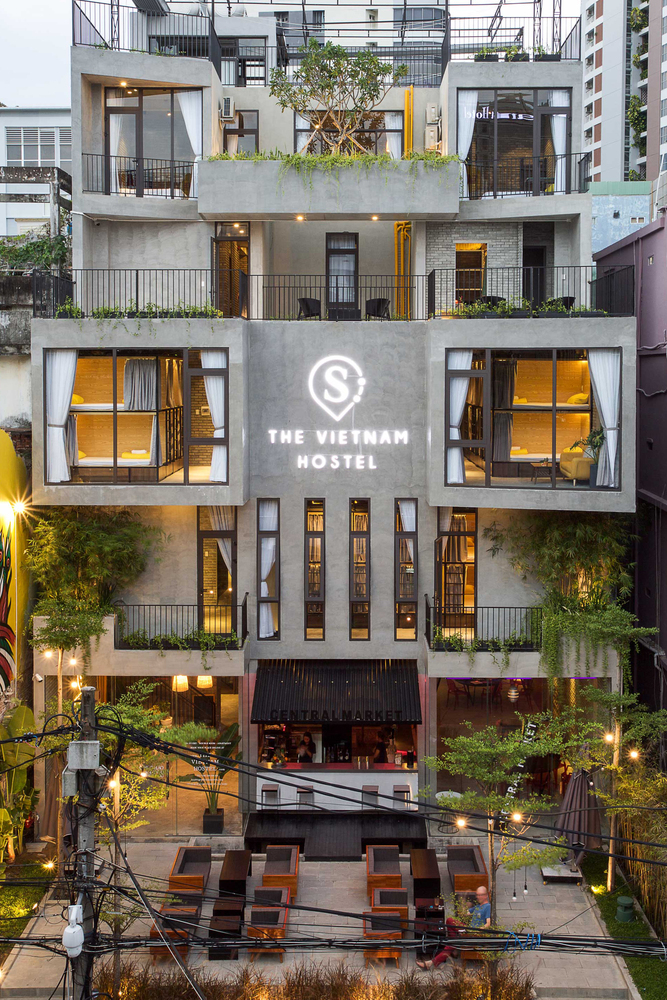Dockboot Holiday Home De Zwarte Hond
2015-07-07 22:00
架构师提供的文本描述。在荷兰北海岸的Schiermonnikoog岛上,与沙丘景观接壤的这座朴实无华、但令人惊讶的、环境可持续的度假别墅与周围环境完美地融合在一起。由于该家庭在那里逗留的时间较长,岛上110平方米的最大家庭足迹不足。该建筑的大部分功能已经规划到地下楼层,从而实现了所需的空间质量和规模,同时保持了结构与周围环境的亲和力。
Text description provided by the architects. On the island of Schiermonnikoog off the north coast of the Netherlands, directly bordering the dune landscape, this modest, yet surprisingly spacious, environmentally sustainable holiday home blends perfectly into its surroundings. Due to the extended periods that the family stays there, the island’s maximum domestic footprint of 110m2 was insufficient. The majority of the building’s functions have been programmed into the underground floor, thus achieving the desired spatial quality and size, while maintaining the structure’s affinity with its surroundings.
L形房屋的位置非常自然的沙丘,它的形式提供了良好的区分私人和公共领域。在私人方面,一个玻璃立面为居住者提供了一个美丽的环境的极好的看法。街道的外墙被关闭,除了沿其几乎整个长度的一个长的水平窗口,让过路人能瞥见里面正在发生的事情。结果,这所房子被阳光照了一整天。
The L-shaped house is positioned very naturally in the dunes, and its form provides good differentiation between the private and public areas. On the private side, a glass façade offers the occupants an excellent view of the beautiful surroundings. The street façade is closed except for a long horizontal window along almost its entire length, allowing passers-by to catch a glimpse of what is happening inside. As a result, the house is illuminated by sunlight throughout the whole day.
立面是由不同宽度和颜色的落叶松木材制成的,随着时间的推移,这些木材将变得越来越灰色,与沙丘进一步融合在一起。屋顶-由木材、锌和苔藓组成-将进一步促进这一进程。屋顶和立面的高度和形状都不断地根据沙丘环境进行调整,这也使房子能够发展出自己独特的特征。
The façade is made of larch-wood of varying widths and colours that will become increasingly grey over time, blending in further with the dunes. The roof – consisting of wood, zinc and moss sedum – will further contribute to this process. The height and form of both roof and façade have been continuously adjusted to the dune surroundings, which also enables the house to develop its own unique character.
起居室由一个大而明亮的开放空间组成,不同的区域由倾斜的屋顶表面定义和连接。这两层之间的关系结合了隐私和人类尺度,允许家庭成员以自己的方式使用房子,而不会对他人造成干扰。
The living-room consists of a large, bright open space where the different areas are defined and linked by the slanting roof surfaces. The relationship between the two floors combines privacy with a human scale, allowing family members to use the house in their own way without causing disturbance to others.
地下楼层包括卧室、浴室和桑拿。这座露台被西面的一堵低矮的木墙遮住,从地面看不见-既带来阳光,也带来通风。房子的外部和内部都使用了木材和石头等天然材料。
The underground floor comprises the bedrooms, bathrooms and sauna. The patio – hidden from view at ground-level by a low wooden wall on the west façade – brings in both sunlight and ventilation. Natural materials such as wood and stone have been used on both the exterior and the interior of the house.
在设计中,不仅通过慷慨使用天然材料,而且通过控制能源使用,使房屋在环境上可持续发展。良好的绝缘、三层玻璃窗、太阳能方向、悬挂物提供的南面自然遮阳以及地下区域恒温的维护都有助于建筑物的可持续性。尽可能使用LED照明,而客厅的壁炉则做其余的事情。这座房子完全不辜负席尔蒙尼库格成为一个自给自足岛屿的野心。
In the design, much attention was paid to making the house environmentally sustainable, not only through generous use of natural materials, but also by controlling energy usage. Good insulation, triple-glazed windows, solar orientation, natural shading on the south façade provided by an overhang, and maintenance of a constant temperature in the underground area all contribute to the sustainability of the building. The use of LED lighting wherever possible, and the fireplace in the living room, do the rest. The house fully lives up to Schiermonnikoog‘s ambition of being a self-sufficient island.
Architects De Zwarte Hond
Location Schiermonnikoog, The Netherlands
Design Team Henk Stadens, Jurjen van der Meer, Freddy Siekmans, Marek Pronk
Photographs Michel Kievits
 举报
举报
别默默的看了,快登录帮我评论一下吧!:)
注册
登录
更多评论
相关文章
-

描边风设计中,最容易犯的8种问题分析
2018年走过了四分之一,LOGO设计趋势也清晰了LOGO设计
-

描边风设计中,最容易犯的8种问题分析
2018年走过了四分之一,LOGO设计趋势也清晰了LOGO设计
-

描边风设计中,最容易犯的8种问题分析
2018年走过了四分之一,LOGO设计趋势也清晰了LOGO设计
.jpg)



.jpg)

.jpg)



.jpg)

.jpg)

.jpg)

.jpg)

.jpg)

.jpg)

.jpg)

.jpg)

.jpg)

.jpg)

































